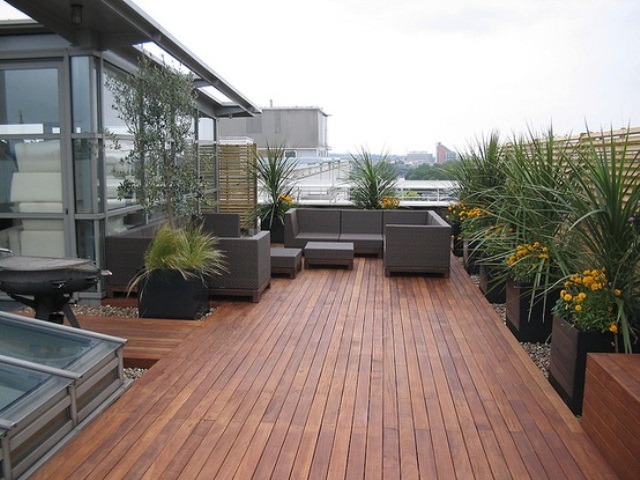Horticulture can be an enjoyable hobby, or even a source of additional income for you. Gardening is not rocket science, but it does require some knowledge so that you don't end up losing money on poorly maintained plants and crops. This list of tips should help you become a more successful gardener.
The fall season has arrived and the task of emptying our container gardens is at task. However, instead of storing your clay pots in a garden shed for the winter season, why not replace the summer annuals with edible fall vegetables. Having mums in your favorite clay pot signifies fall, however, consider adding alternative edible plants like leafy lettuces such as arugula, endive, bok choy and radicchio. When it is time for a quick salad, simply snip a few leaves, and you will instantly have delicious ready to eat salad.
If you have enough space pick one row in your garden to contain an assortment of different vegetables. Try uncommon or unusual crops that you wouldn't want in abundance, but that can liven up a meal that you prepare using your usual crops. Plant crops in this row over time so that you'll always have a selection of vegetables to try.
You can use items in your fridge for a safe and organic way to adjust the pH of your water. You can use lemon https://www.tumblr.com/search/terrace%20decor juice or apple cider vinegar to lower your pH (a few drops at a time) or use baking soda to raise your pH (a pinch at a time checking after each adjustment).
Make sure that you prune your trees regularly. Dead wood on trees can attract pests that can infect your trees. Also, when you trim back small branches on a tree, it will increase the airflow between the branches and allow the larger branches to develop more. This will result in a stronger and healthier tree linked internet page overall.
To help your plants grow faster, pre-heat the soil in your garden before you begin planting. Most plants love warm soil, and this will allow them to grow quickly. One of the easiest ways to pre-heat your soil is to cover it with black plastic, such as garbage bags or a tarp.
If you want to grow fruit trees but have limited space on your property, consider dwarf fruit trees. Many fruit trees are available in dwarf varieties, including apple, peach and pear. These trees typically reach approximately three to eight feet. Not only do they take up less room and produce lots of delicious fruit, but their low height makes it easier to harvest the fruit.
To make a dull plant look greener, bury match heads near the plant's base. The primary reason for a plant looking dull or faded is sulfur deficiency. Putting match heads in the soil around the plant will allow the soil to absorb the sulfur and feed it back to the plant.
To make the most of the water you use, be sure to water your plants first thing in the morning. Doing this makes your water less likely to evaporate, and allows foliage to dry quickly. This reduces the risk of many common diseases, and will help your plants grow to be strong and healthy.
Even if you think you will remember which plants are which later, tag your plants properly from the beginning. Plants can look very different after just a few weeks. Write plant names on flat rocks with a permanent marker in a decorative way, and lay them next to each plant so that you can save yourself from confusion down the road.
Plan your garden for best results. Before you put one spade into the dirt, you need to decide what you will plant, and where. You want to plot your garden's size, and then decide what plants use according to their individual needs. Consider lighting, drainage, and spacing for each plant.
Toads can be a gardener's best friend because of all the troublesome bugs they eat. To attract toads to come visit your garden and stay awhile, keep the garden bedding moist and offer some places where they can safely hide from predators of their own. A useful trick many gardeners use is to place old, broken clay flower pots upside down in the garden to function as a comfy shelter for the hard-working toads.
When you plan your organic garden, remember that some plants, especially leafy greens like lettuce and spinach will mature well before the end of the growing season. Beds for fast growing plants can often produce two harvests in one season. Have more quick-growing plants ready to replace the early harvest so that you can maximize your garden's productivity.
Planting an insectary garden beside your vegetable garden is a natural and effective way to rid your vegetable garden of harmful insects. With the right variety of plants, this garden spot will attract beneficial insects that will kill and eat the harmful ones that eat your vegetables. The insectary can be a separate garden or several small plantings interspersed among the vegetables.
If you have an infestation of bugs in your organic garden, you can make a simple spray to deter them. Soak hot peppers or garlic in hot water for several hours then strain the solids. Add a small amount of soap to the water and put in a spray bottle. Spray your plants on a regular basis.
Integrate low-growing strawberries into your yard's landscape. Instead of setting aside fruit plants in a separate area, choose strawberries, such as alpine varieties, to use a ground cover that doubles as a fruit garden. These spreading, low-growing plants look attractive and grow well in areas that have a lot of sun.

One of the most important things you can do in regards to your organic garden is be aware of the types of plants that you can use. When buying plants for your landscape, try looking for well-adapted plants that can be used in your soil, with your sun or shade exposure and that can survive in your temperature range.

These tips should have given you some much needed insight on where to start and how to begin growing your own personal organic garden. These tips were thoughtfully compiled to help the new organic gardener learn the basics and some other cool techniques that are simple enough to use for their garden.

